How Refrigerator Works and Its Main Components
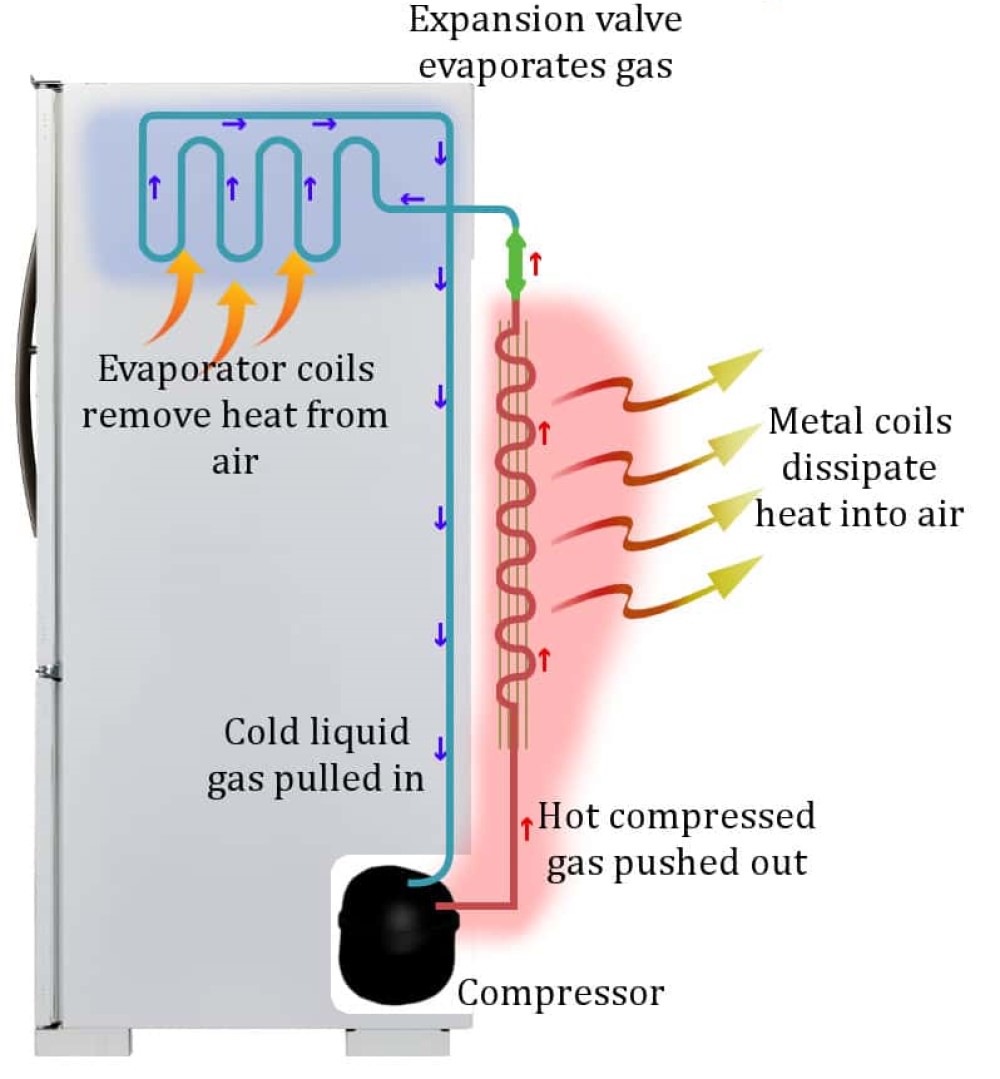
One of the essential appliances for every family, particularly on warm summer days, is a refrigerator. So have you ever wondered how refrigerator works? Our article will help you learn about this in detail.
The mechanism of pressure, condensation, and evaporation of liquids in a closed circuit is used by refrigerators to remove heat and lower the temperature inside the appliance. The picture illustrates how the liquid, which is referred to as a refrigerant, flows through the circuit to chill the interior of the refrigerator.
Post Contents
What are a refrigerator’s main components?
Compressor
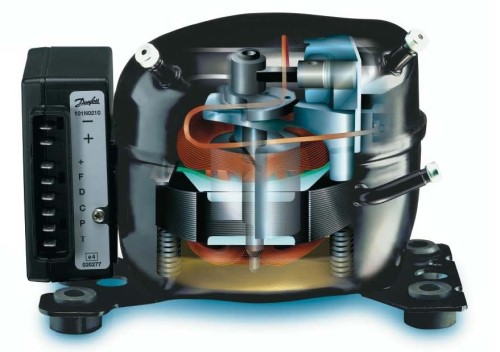
Condenser
Located at the back of the refrigerator, the condenser is made up of a coil set with exterior fins. By absorbing heat from a gaseous refrigerant and subsequently dissipating it into the environment, it aids in its liquefaction. The temperature of the refrigerant decreases to the condensing temperature when the heat from the refrigerant is eliminated, which causes it to transform from a vapor to a liquid.
Expansion valve
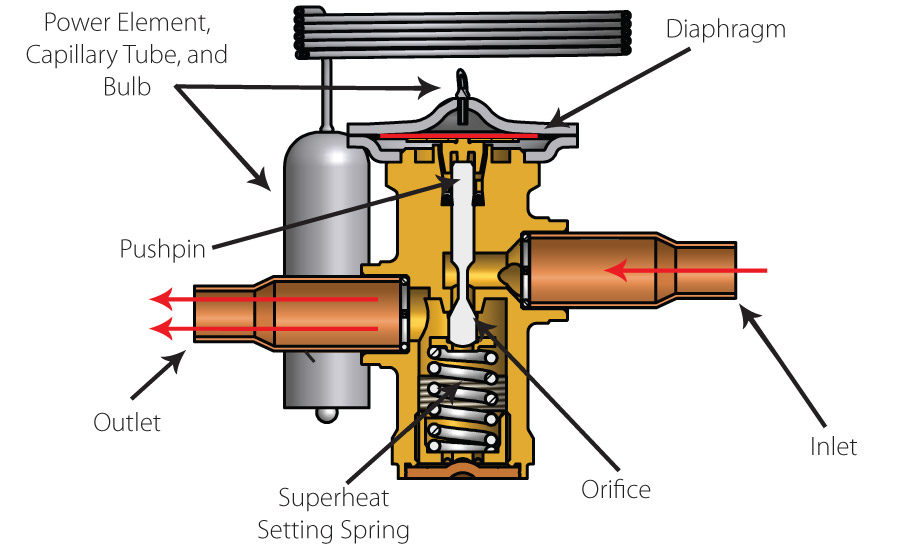
An expansion valve, sometimes referred to as a flow control device, regulates the flow of liquid refrigerant (commonly referred to as “coolant”) into the evaporator. It is actually a very tiny gadget that reacts quickly to changes in refrigerant temperature. The liquid is then forced to expand as it goes through an expansion device, where a portion of it instantly turns to vapor due to a fast drop in pressure and expansion. There is a cooling effect from this state transition.
Refrigerants
It is the fluid that keeps the refrigeration cycle going and is also referred to as a coolant. In actuality, it’s a specifically created chemical with the ability to switch between hot gas and cold liquid. It serves the purpose of transferring heat from the refrigerant to the environment that needs to be cooled, making it a crucial component of the refrigerator’s construction. The refrigerant will be supplied to boil at a low temperature by collecting the heat from the cold medium. After the throttle valve or capillary, the evaporator is mounted in front of the compressor.
Thermostat

By monitoring the temperature and controlling the compressor’s on and off states, the thermostat regulates the cooling process. The compressor is turned off when the sensor determines that the interior of the refrigerator is cold enough. It resumes the cooling process and activates the compressor if it detects too much heat. is in charge of managing every aspect of the operation of the cooling process’s components, acting as the refrigeration system’s central nervous system.
Ventilation fins
The refrigerator’s back fins allow heat to escape. It is in charge of moving air through the interior unit to increase the effectiveness of heat absorption on the indoor unit and to distribute cold air across the refrigerator compartments. Both the compressor and the indoor unit fan must run at the same time. In particular, all freezers with small external units situated in the lower rear compartment are employed outdoor unit fans. Therefore, to constantly make sure the refrigerator is in the best possible working condition, you need to inspect the exterior unit fan and clear the dirt on it after using it for a while.
Evaporator
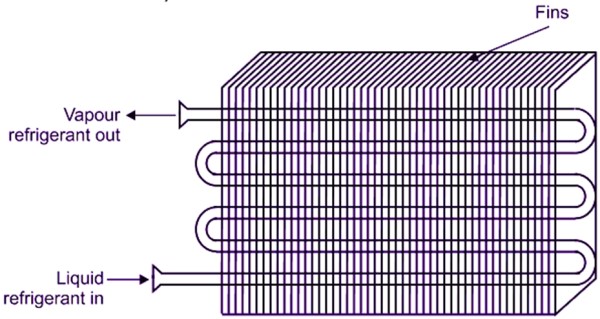
Ingredients kept in the refrigerator are cooled in this section. It is constructed out of finned tubes, which absorb the heat produced by the fan forcing air through the coil. The finned tubes are composed of metal with a high thermal conductivity for maximum heat transmission. The heat from what is kept inside the evaporator is absorbed. The refrigerant cools the region around it as it evaporatively changes from a liquid to a gas, providing the ideal atmosphere for food storage. The air within the refrigerator warms up as the cold liquid absorbs it, changing it back into a gas at a low temperature and low pressure. It now resumes its passage through the compressor.
Capillary tube
A tiny tube that serves as an expansion tool is known as a capillary tube. Through the capillary tube, the liquid refrigerant is transported into the evaporator’s low-pressure environment. The material used to construct gas pipes is typically copper, which has the advantages of being malleable, simple to weld, impact-resistant, not oxidized, durable, and difficult to gas leak. The size of the copper wire will vary depending on the design of the inverter refrigerator or the fan structure.
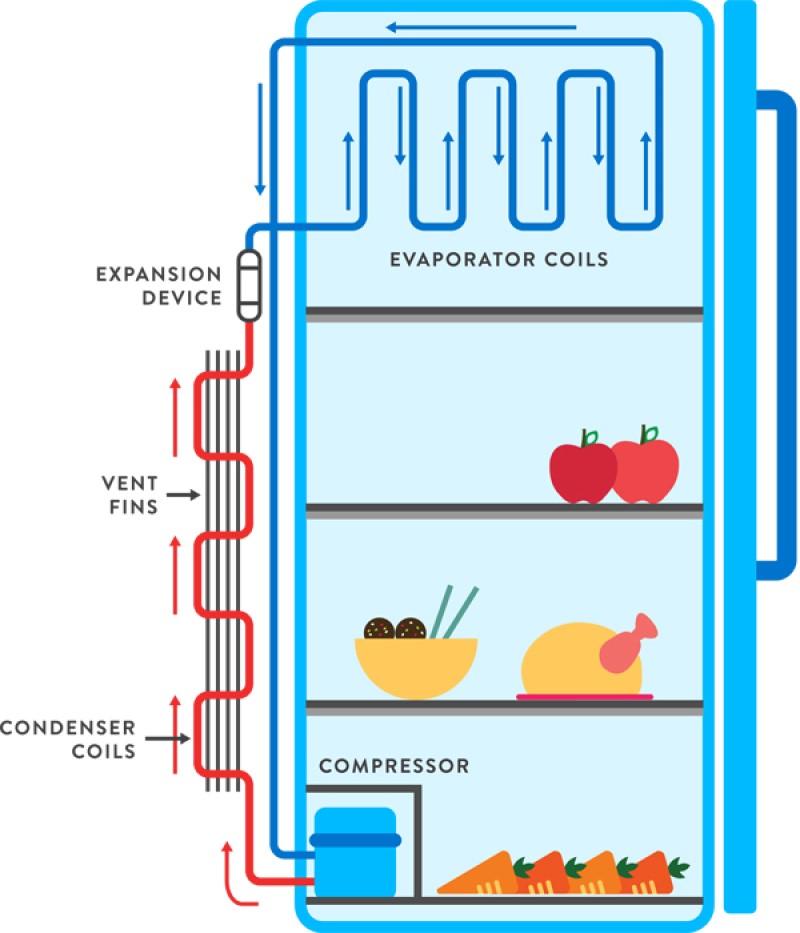
How refrigerator works
Removing heat from one place and putting it in another is the basic idea behind refrigeration and cooling. The heat from the objects is transmitted to the low-temperature liquid as it is moved toward the objects you want to chill; the liquid then evaporates, absorbing the heat as it does so.
Compressing gas: Compressing gas at the compressor: The compressor in the refrigerator is used to push the refrigerant to extremely high temperatures and pressures, at which point it is in a gaseous condition.
Condensation at outdoor unit: High-temperature, high-pressure gas will be pushed to the outdoor unit after being compressed at the block. Here, it will be cooled by the air before condensing at a low temperature and high pressure into a liquid.
Expansion: The throttle valve is filled with low-temperature, high-pressure fluid. There, it changes into a low-pressure, low-temperature form.
Vaporization at the indoor unit: In order to evaporate and chill the environment within the refrigerator, the refrigerant at the indoor unit gets high heat from the air in the refrigerator. The refrigerant will be returned to the compressor after vaporization to begin a new cycle.
Bottom Line
How refrigerator works or working principle of refrigerator is something we need to understand when using or checking/repairing your refrigerator in necessary cases. Almost all refrigerators today share the same principle of operation of the refrigeration system. In this article, we have outlined the main components of a refrigerator and how it works in a simple way for you to imagine. Hope you will get more knowledge from here.
You may also like:
What Temperature Should A Refrigerator Be? – Best ways to keep the fridge and freezer cool
Conclusion: So above is the How Refrigerator Works and Its Main Components article. Hopefully with this article you can help you in life, always follow and read our good articles on the website: Refrigerator- side by side Refrigerator -Appliances Kitchen Review Blog




